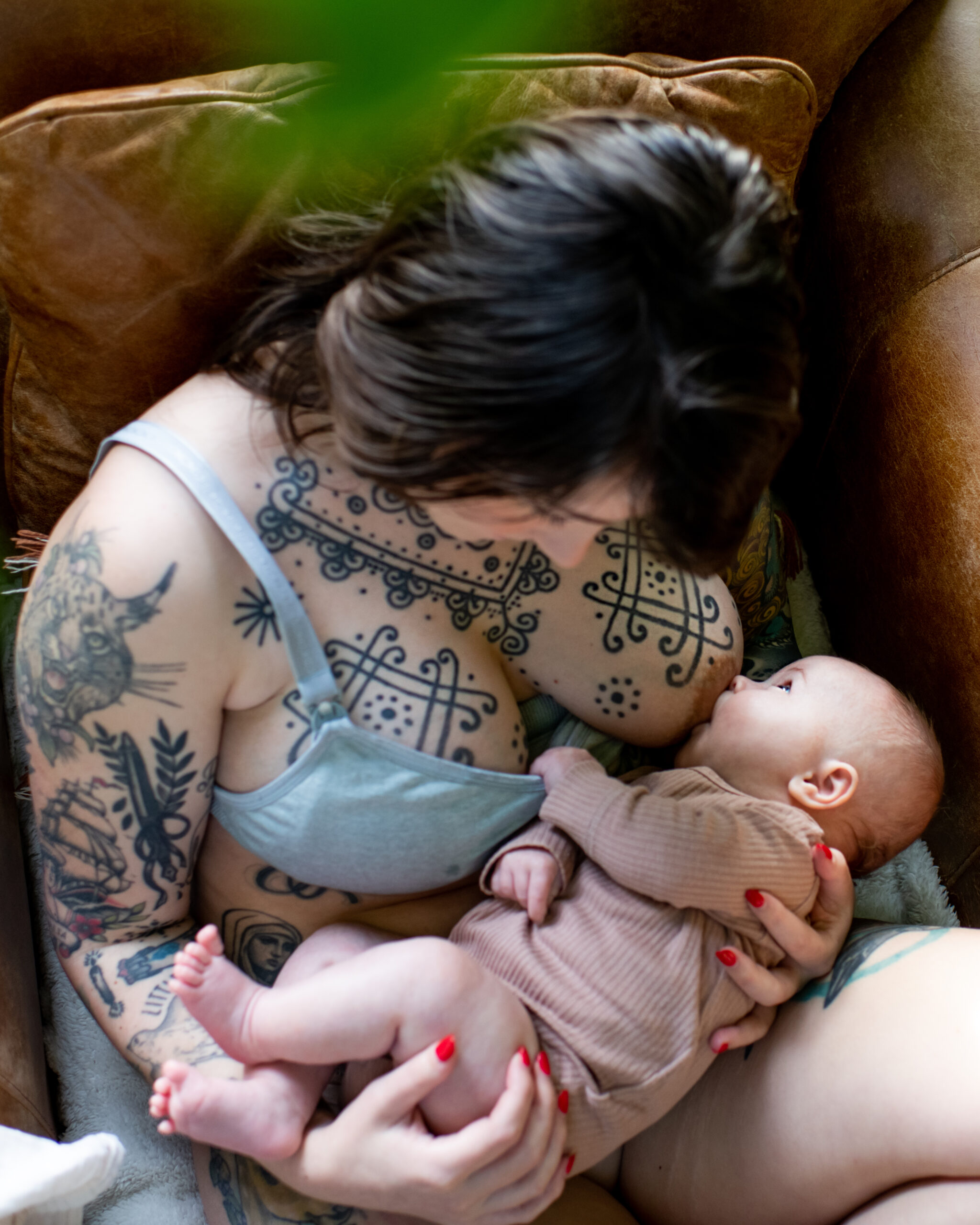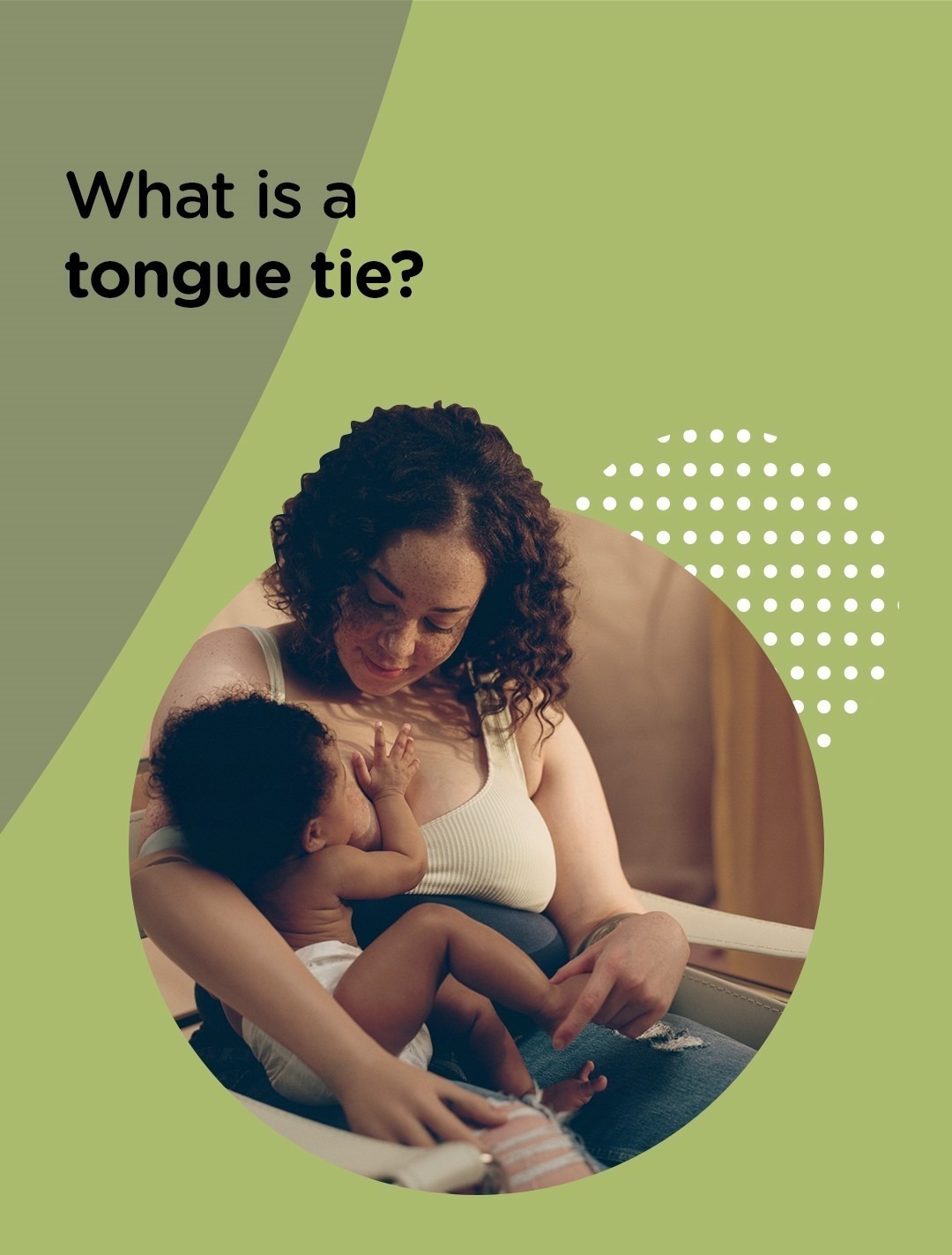The truth is, breastfeeding can be challenging at times. Some parents experience nipple pain that’s caused by breastfeeding both during the early days and beyond.
Sore nipples are the most common breastfeeding complication and are usually the result of an improper latch. Try not to worry, nipple pain can usually be resolved at home. But don’t hesitate to consult your GP or midwife if you have any concerns.
To help you out, let’s run through what causes nipple pain when breastfeeding a baby, cover some top tips to relieve it, and find the answers to some of the most common questions people ask about sore nipples.
What causes sore nipples when breastfeeding?
Most of the time, an improper latch is the main cause of sore nipples when breastfeeding. If a baby is only sucking on the nipple rather than feeding properly and removing breast milk, their tongue or the roof of their mouth can rub against the nipple. This causes it to become sore and cracked.
Some causes of an improper latch can include tongue tie. This is when the skin joining the underside of the baby’s tongue to the floor of their mouth restricts the movement of their tongue.
If you have flat or inverted nipples, it may be harder or take longer to breastfeed and your nipples may become sore as a result.
It’s best to try not to stop breastfeeding due to nipple soreness if possible. Breast milk is created based on supply and demand, so the less you feed your baby, the less milk you will produce.
Other reasons for sore boobs when breastfeeding
Let’s run through some other common causes and conditions that can lead to sore nipples or overall breast pain when breastfeeding.
Nipple blanching (vasospasm)
Also known as vasospasm, this happens when blood flow is restricted to the nipple area. It can be caused by a shallow latch or Raynaud’s syndrome (a condition that affects blood supply). This can be painful or cause a burning sensation, and the nipple may look white.
If you experience nipple blanching, it’s best to avoid cold exposure, stay warm when breastfeeding, and apply a warm compress immediately after feeds.
Dry skin conditions (like eczema)
If you have underlying eczema, you might be more prone to breastfeeding discomfort and nipple pain. Dry skin conditions like eczema can develop around the nipple and cause discomfort that might affect breastfeeding.
Irritants from soaps, perfumes, or detergents can cause skin irritation. These can also sometimes worsen sore nipples if they’re already cracked, so it’s best to avoid these if you have irritated, dry skin.
Breast engorgement
Breast engorgement happens when your breasts become sore because they’re overly full of breast milk. This can happen when your breast milk first comes in, or at any point in your feeding journey. If you experience breast engorgement, you should continue to breastfeed your baby if you can. Use warm heat packs or have warm showers before feeding to provide some relief.
Milk blister (bleb)
A milk blister or bleb develops when a small piece of skin grows over a milk duct and causes it to become blocked. This can be painful and appears as a white, yellow, or clear ‘dot’ on the areola or nipple. These can last for several days to weeks but should clear when the skin breaks in the affected area.
Blocked milk ducts
When the ducts in the breast aren’t drained properly, this can lead to the development of a blocked milk duct. This can present as a hard lump in the breast that feels sore or tender. To help, you can continue to feed regularly, use a warm compress, and gently massage the lump to help unblock it so that your breast milk can flow comfortably again.
Mastitis
Mastitis is inflammation of the breast that’s caused by blocked milk ducts or an infection. It causes the breast to become inflamed, appear darker in colour, and can be painful. It can also lead to a breast abscess that may require treatment from your doctor.
Thrush
Nipple pain can sometimes be caused by a thrush infection. Thrush occurs when nipples become damaged and can be painful, often feeling like a burning sensation or shooting pain in the nipple after breastfeeding. It can sometimes also develop in the mouth of the baby and needs to be treated with a prescription medication from a GP.
Tips for sore nipple relief
Finding the right type of relief for your sore nipples depends on what’s triggering the discomfort in the first place. Here are some ways to alleviate nipple soreness and discomfort caused by breastfeeding:
- Ensuring your baby is properly latched on when feeding. Once your baby’s latch is improved, your sore nipples should heal on their own. Georgia says that “the first latch was painful, I remember having nightmares about the baby not being able to latch. It was traumatic, I remember rocking back and forth thinking I can’t do this. But wanting to breastfeed so badly, I carried on. Luckily, the team sent specialist breastfeeding support round and it turned out the latch was incorrect. It was ok after that, but I can imagine people think the pain is normal”.
- Making sure you break the suction of their latch before removing your baby from the breast. You can do this by gently sliding a clean finger into their mouth to break the hold they have on your nipple.
- Trying different breastfeeding positions to see if they work better and are more comfortable for you and your baby.
- Using a breast pump to express for a while if breastfeeding directly is too uncomfortable.
- Changing your breast pads after each feed.
- Wearing soft, cotton nursing bras that fit correctly.
- Avoiding irritants in soap or detergents. Instead, use ordinary mild soap – not antibacterial.
- Dabbing expressed breastmilk onto your nipples after feeds.
- Applying a warm water compress to soothe your nipples.
- Applying a cold compress or chilled cabbage leaves can soothe sore breasts.
- Using silicone nipple shields when breastfeeding to protect your nipples. Looking back at her breastfeeding journey, Sarah says that “at one point, [she] was in so much pain that [she] considered stopping, until the midwife gave [her] a nipple shield to allow [her] nipple to heal whilst continuing breastfeeding. It really helped [her] and saved [her] from stopping altogether”.
- Applying nipple cream to soothe sore nipples. Products like Vaseline or lanolin may also help.
- Taking breastfeeding-friendly painkillers or anti-inflammatory medication. Ibuprofen and paracetamol are compatible with breastfeeding. But if you’re not sure about a painkiller, consult a pharmacist for reassurance.
Should I reduce or stop breastfeeding if I have sore nipples?
If you can, it’s best to persevere and try to continue breastfeeding regularly to maintain your milk supply. Expressing your breast milk manually or using a breast pump and then feeding your baby with a bottle can help by giving your nipples a break and time to heal.
Even in the case of a breast infection like mastitis, it’s best to continue breastfeeding if you can, unless you’ve been advised otherwise by a health professional. The antibodies in your milk help to protect your baby from infections.
Although you may think that keeping feeds short to let your nipples ‘rest’ will ease nipple pain, this can be detrimental because decreasing feeds can reduce your breast milk supply.
What can I do if my breastfeeding nipple pain doesn’t get better?
If you’re experiencing pain when feeding or sore nipples that are not healing, you should ask for help and advice from your doctor, or a lactation specialist.
Can I prevent breastfeeding nipple pain?
Making sure that your baby is properly latched on when feeding will mean that your nipple can reach the back of their mouth. This will protect it from being rubbed, squashed, or irritated while you are breastfeeding.
Sore nipples when breastfeeding FAQs
-
HOW LONG WILL I HAVE SORE NIPPLES AFTER BREASTFEEDING?
Lots of parents experience some nipple pain in the early days of breastfeeding, and this usually only last for around a week. However, nipple pain can sometimes occur beyond the start of your breastfeeding journey. Soreness that lasts throughout the feed or continues for more than one week is not normal and you should seek support from a lactation consultant.
-
CAN YOU GET NIPPLE PAIN AFTER BREASTFEEDING WITH A GOOD LATCH?
An improper latch is usually the cause of nipple pain when breastfeeding, but if this isn’t the case, there may be underlying problems, such as an infection like thrush. If your baby is properly attached and positioned and nipple pain still occurs, you should contact your midwife, doctor, or a lactation consultant for support.
-
WHICH BREASTFEEDING POSITIONS ARE BEST FOR SORE NIPPLES?
Some breastfeeding positions can potentially offer some relief if you’re experiencing sore nipples. These include the laid-back, football, and cradle positions.
-
CAN SORE NIPPLES DECREASE MILK SUPPLY?
Having sore nipples alone won’t affect your breast milk supply – as milk is produced on a supply and demand system, but if the discomfort causes you to limit your baby’s time on the breast, this could end up decreasing your milk supply, so it’s important to keep breastfeeding or expressing if you can.


